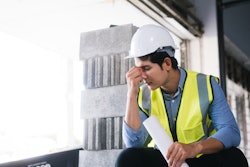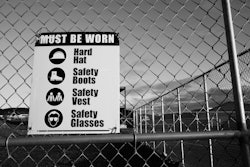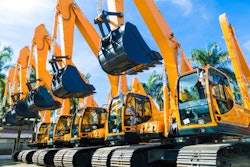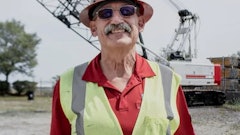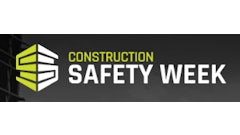
In construction, safety isn’t in a classroom, it’s forged in the field. Most jobsite injuries aren’t freak accidents but the result of small oversights, ignored signals, or old habits that persist because “it’s always been done that way.” The real threat isn’t lack of knowledge; it’s cultural resistance. Pie Insurance’s 2025 Workplace Safety Report confirms what seasoned crew leaders already know: resistance, not ignorance, is the biggest hurdle to making lasting improvements on the jobsite. A striking 53% of small construction decision-makers identified employee resistance as the number one barrier to making safety improvements stick.
While the industry has made real progress, preventable injuries like falls, slips, trips, cuts and overexertion still top the charts. This pattern reveals a critical insight: the issue isn’t awareness. It’s execution.
Under pressure from tight timelines, unpredictable weather or short staffing, it’s easy to default to speed over caution. When new safety measures are rolled out without context or trust, pushback becomes inevitable. The question isn't whether resistance will emerge — it's how leaders will respond to it.
As someone who’s spent nearly three decades in commercial insurance, I’ve worked with thousands of small construction businesses and seen these cultural dynamics play out in real time. I’ve reviewed claims where a single missed step became a life-altering event, and I’ve seen teams turn things around just by getting the right habits in place. The gap isn’t usually about knowledge, it’s about consistency, accountability and trust.
Five Strategies to Transform Safety Culture from Compliance to Commitment
1. Spot Resistance Early. It Doesn’t Always Look Like Defiance
Not every worker resisting a new rule is going to speak up about it. Resistance might show up quietly, through eyerolls, side comments, skipped steps, or old shortcuts creeping back in. These behaviors are early warning signs, not team defects.
Instead of reprimanding, pull resistant workers aside for honest conversations and feedback: What’s not working here? What doesn’t make sense? Treating resistance as a solvable problem rather than insubordination shows leadership and builds trust. Follow up with small, visible wins, like adjusting a form or clarifying a process. Action proves you're listening.
2. Don’t Just Say It, Show It
Jobsite safety culture starts with what leaders do, not just what they say. If a foreman skips the safety walk or disregards PPE, crews will follow suit. Conversely when supervisors walk the walk, even when it’s inconvenient, they establish safety as the standard, not a suggestion.
The National Safety Council, emphasizes that “lone workers face significantly higher risks of serious injury or death due to delayed emergency response, communication challenges, and increased exposure to hazards.” For small construction businesses where one or two people often handle entire jobs, building in even basic safety redundancies, like check-in systems or hazard recognition training, can save lives.
3. Make Safety Specific, Not Generic
Blanket rules without explanation often get ignored. Crews want to know why something matters, not just what to do. Consider this approach: instead of simply mandating “Use fall protection and wear the harness,” provide context and information: “Falls from 6-30 feet caused 64.4% of construction fatalities in 2023, with portable ladders involved in 109 of those deaths. This harness protects both your spine and your life.”
According to the Bureau of Labor Statistics, in 2023, the construction industry experienced 1,075 fatal falls, accounting for 23.7% of all fatal falls. When crews understand these stakes, compliance becomes a personal investment rather than burden. Involve workers in developing checklists and leading briefings. This participation builds ownership and improves adherence.
4. Reward Safety Performance, Not Just Productivity
It’s easy to reward speed, productivity, or hitting a deadline. However, if these are the only wins you acknowledge, safety becomes a footnote. Recent Frontiers in Public Health research on construction workers found that rewarding good safety compliance was more effective in encouraging proper behavior than penalizing non-compliance.
That means celebrating safe decisions like pausing to flag a hazard, asking a coworker for help with a heavy lift, or taking a moment to double-check gear, reinforces the behaviors that keep people safe. Even small gestures, like a weekly shout-out, a quick recognition at a briefing, or a simple “thank you” on your way by, help build a culture where caution is valued, not overlooked.
5. Make Feedback a Two-Way Street — Buy-In Starts with Being Heard
The most valuable safety insights often come from the field. Crews notice what works and what doesn’t long before it’s captured in a report. Research shows that behavior-based safety programs consistently reduce unsafe behaviors and improve overall safety performance in construction settings. That kind of progress starts with dialogue: asking what’s unclear, what feels unnecessary and what could be improved.
Try dedicating a few minutes during weekly meetings to surface insights from the crew. When workers are invited to shape safety practices, not just follow them, they become more engaged, more accountable and more proactive.
The Bottom Line
Whether you’re a foreman, a lead carpenter, or a business owner who’s also swinging the hammer, your influence on jobsite culture is real. You don’t need a dedicated safety department or a dozen policies to start changing outcomes. You need clarity, consistency and a willingness to listen.
You can’t out-train resistance. You can, however, lead through it, with the right mindset, the right message, and the commitment to keep safety front and center.
The crews that make it home safely each day aren’t perfect. They’re just working in an environment where safety is respected, reinforced, and expected from the top down and the ground up.
That’s a jobsite worth building. And it starts with you.





